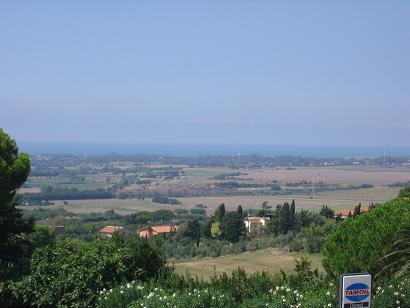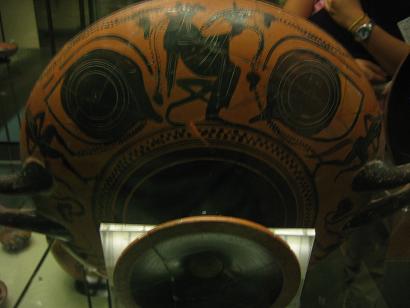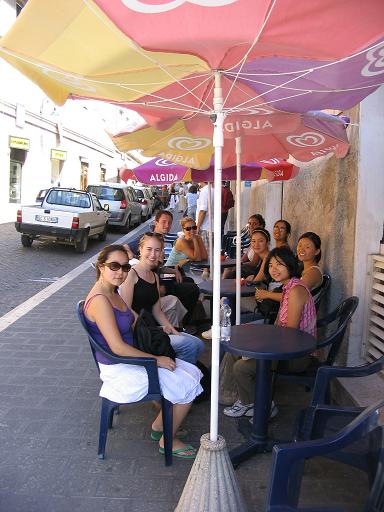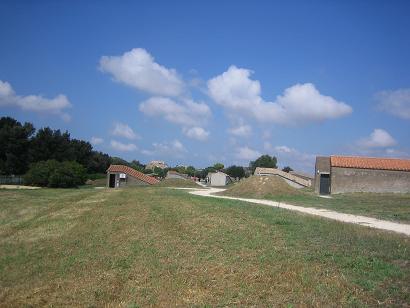|
|
 |
|
082605 Etruscan Tombs and Tarquinia |
|
written
by minhan / 08.29.2005 |
|
|
| |
Itinerary |
| |
| |

|
| Photo taken by Nina Miller |
| The amazing view of Tarquinia |
| Here is a view of the beautiful open area that you can see from the Etruscan Tombs. |
| |
|
| |

|
| Photo taken by Nina Miller |
| Kylix |
| This Kylix or a wine bowl is original Greek but was taken by the Etruscan and put in their tombs. |
| |
|
| |

|
| Photo taken by Joe Plumb |
| Sacrophagus |
| The Etruscan Sacrophagus shows the person leaning on his side as if still full of life. |
| |
|
| |

|
| Photo taken by Lisa Schultz |
| Gelato! |
| Resting our feet with some gelato. What could be better. |
| |
|
| |

|
| Photo taken by Joe Plumb |
| Kayanna meeting the locals of Tarquinia |
| At the request of a few people, I thought I might include this to fully portray the day. |
| |
|
August 26, 2005
Bright and early, we all met at 8:30 and all 18 of us packed into a private bus, which happened to be even nicer than the ones back in Seattle. After an hour bus ride, which many took advantage of as naptime or time to drastically try to finish the readings, we arrived at the Etruscan Tombs. The Monterozzi necropolis is on a 133m high hill and is 4 miles from Tarquinia, the Etruscan capital. The idea of all the history in this place is incredible; the Etruscans were the main inhabitants of Italy before even the Romans came.
As we walked out of the bus, it was a complete change from the busy, loud and narrowed spaces of Rome. In every direction, there were just vast open spaces filled with rolling hills. The area was beautiful because there were barely any modern buildings. Our professors Lisa and Shawn bought our tickets in and then let us loose for an hour and a half. Imagine all of us running around trying to get the chance to see all the tombs. Although there were many tombs, there were only thirteen tombs that were open for viewing. Since these tombs are so precious, many precautions were taken to preserve them. Originally these tombs were just mounds with dromos leading to the doorway. However, later on, the tombs were sheltered by little houses called “casette” to prevent damage from rain. Going down the narrow stairs of the casette, lead us to a glass window that looked into the actual tomb. The cramped place allowed only two people to view comfortably. Humidity and light exposure was controlled with the ceiled room that contained the glass window, which the public could view through. Light buttons on the side of the window allowed for light so we could see the amazing paintings on the walls inside the tombs. The experience of just sitting on the stairs and staring into the tomb was amazing. Some of the paintings were fairly intact and I personally thought it was breathtaking to be able to view firsthand these paintings and try to make my own inference of the Etruscan culture and try to see what D.H. Lawrence saw when he visited the place.
After getting our postcards and souvenirs, we headed on out to the bus to go to the modern city of Tarquinia. We were given an hour and a half to wander the city. The city was much quieter and less crowded than Rome. Many wandered through the stores and even went to the edge of the walled city to enjoy the breathtaking view.
After a nice gelato break, we went into the National Museum of Palazzo Vitelleschi, which contain many great Etruscan arts. The first floor contained many Etruscan sarcophagi. The second floor contained many potteries. Most of the potteries were, however, Greek in origin that were taken by the Etruscan and put in their tombs. This floor was my personal favorite because of the interesting drawings on the potteries. The third floor had a gorgeous view of the city and contained transferred Etruscan tombs and other objects found at the sites.
After the long day out in the sun and walking around, the air conditioned bus ride back felt fantastic.
|
| |
|
| |
|
| |
Highlights |
| |
| |

|
| Photo taken by Nina Miller |
| Etruscan Tombs |
| From the outside these amazing tombs look like simple green mounds. Who knew that inside, they contained beautifully painted walls. |
| |
|
These Etruscans tombs contain much information on the culture, lifestyle and civilization of the Etruscan. The paintings on the ceilings and walls showed the life of the aristocratic class of that age in a fairly realistic way. They showed the everyday life with pictures of banquets, dancers, hunting, athletic games, and funeral rites to honor the dead. The modern tombs, however, showed more influence from the Greek culture by using more demonic pictures. It is really interesting to think about how by looking at these paintings, we can tell a little bit more than we knew before about what these ancient people believed in.
|
| |
|
| |
|
| |
Images |
| |
| |

|
| Photo taken by Nina Miller |
| Painted walls of the Tomb of Cacciatore |
| The walls are painted like a tent. It is supposed to be like a hunting pavilion. You can see many different animals on the walls and have a sense of the close relationship man had with animals. |
| |
|
|
| |
|
| |
|
|
 |
|
